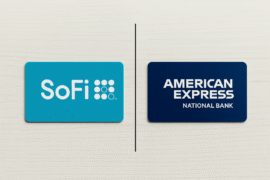This article may contain references to products or services from one or more of our advertisers or partners. We may receive compensation when you click on links to those products or services. Nonetheless, our opinions are our own.
The information presented in this article is accurate to the best of our knowledge at the time of publication. However, information is subject to change, and no guarantees are made about the continued accuracy or completeness of this content after its publication date.
- Key Highlights
- Introduction
- Understanding the Basics of 401k Plans
- Preparing for the 2025 Contribution Limits
- Step-by-Step Guide to Maximize Your 401k Contributions
- Conclusion
-
Frequently Asked Questions
- What are the benefits of maximizing 401k contributions?
- How often can I change my 401k contribution amounts?
- Can I contribute to both a 401k and an IRA?
- What is the contribution limit for a 401k plan in 2025 for individuals over the age of 50?
- Are there any catch-up contributions allowed for individuals over 50 in a 401k plan?
- What are the benefits of maximizing my 401k contribution limit as I approach retirement age?
- How can I calculate the optimal contribution amount to maximize my savings while staying within the IRS limits?
- Recommended Reads
Key Highlights
- The 401(k) contribution limit increases to $23,500 for 2025.
- Individuals aged 50 and older can contribute an additional $7,500 as catch-up contributions.
- There is a higher catch-up contribution limit of $11,250 for individuals aged 60 to 63.
- The IRA contribution limit remains at $7,000, with an additional $1,000 catch-up contribution for those aged 50 and over.
- Consider your financial situation, employer match programs, and contribution strategies to maximize your savings.
Introduction
Planning for a comfortable retirement takes thought about your personal finance strategy. Your 401(k) is very important for creating a strong retirement plan. Learning how to make the most of your savings can help your retirement savings grow a lot. This article will show you the 2025 401(k) contribution limits and give you helpful steps to reach your retirement goals.
Understanding the Basics of 401k Plans
With retirement coming soon, it is very important to know about your financial tools. One great tool is the 401(k). This is a retirement savings plan that employers support. It helps you save money for retirement while providing tax benefits. This makes it an important part of your financial planning.
So, what is a 401(k) really, and how can it help you? Let’s explain it simply.
What is a 401k Plan?
A 401(k) plan is a retirement plan offered at work. It lets employees save part of their salary into a retirement account. This money is taken out of your paycheck before taxes, giving you a tax break right away. The federal government sets yearly limits on how much you can contribute, and these limits can change.
The good thing about a 401(k) is that the money you put in can grow without being taxed right away. You only pay taxes on the earnings when you take the money out in retirement. This can greatly help your retirement savings over time.
Also, some employers have matching contributions. This is a great benefit because it adds free money to your retirement savings. Your employer pays a percentage of what you contribute, helping you save even more for your retirement.
Importance of 401k for Retirement Savings
In personal finance, a 401(k) is very important for saving for retirement. It’s best to start early. Even small, regular contributions can grow a lot over time due to compounding interest. Each tax year gives you a chance to use this saving tool.
Taking care of your 401(k) can really help ease financial stress as you get closer to retirement. By putting money in and making smart choices about investments, you can help ensure a better financial future.
Remember, saving for retirement needs to be a regular effort. A 401(k) makes it easier and offers good tax benefits to help you reach your financial goals.
Preparing for the 2025 Contribution Limits
As you get ready for the future, it’s important to keep up with changes in retirement plan rules. If you are over 50, you need to be smart about your contributions to your 401(k) in 2025. This is important because of the new guidelines from the federal government.
Knowing these limits helps you understand how to plan your contributions. This knowledge can help you save more for your future.
Overview of the 2025 Limits for Individuals Over 50
In 2025, employees under 50 can put up to $23,500 into their 401(k) plan. This amount is just for what the employee contributes, not counting any money from their employer. Even if your salary is lower than this amount, you can still contribute up to it. However, all your 401(k) contributions, including what your employer adds, can’t be more than your yearly salary.
If you’re over 50, there’s even better news! The Internal Revenue Service lets you make catch-up contributions. This helps you save more for retirement as you approach that time. For 2025, you can add an extra $7,500.
Starting in 2025, people aged 60 to 63 can also make a larger catch-up contribution. They can add an extra $11,250! So, people aged 50 to 59 or 64 and older can save a total of $31,000 in 2025. Those aged 60 to 63 can save a total of $34,750.
Changes from Previous Years
The Internal Revenue Service updates the yearly contribution limit for 401(k) accounts from time to time. They often do this to keep up with inflation. This is great news for retirement savers. It helps their contributions match the increasing cost of living. The limit for last year was $22,500. For 2025, the limit is $23,500, which is a $1,000 increase.
The increase for next year shows how important it is to check and change your retirement savings plan. If you do not adjust for these yearly increases, you could miss out on “free money.” This is especially true if your employer matches your contributions.
It’s important to stay informed about these changes and plan for them. Even small changes can greatly affect your financial future.
Step-by-Step Guide to Maximize Your 401k Contributions
Navigating 401(k) plans can seem tough, but using a smart plan can make it easier. If you break it into simple steps, you can boost your 401(k) and prepare for a secure retirement.
Let’s look at a clear way to maximize your contributions and get the most from this great retirement savings tool.
Step 1: Assessing Your Financial Situation
Before changing your 401(k) contributions, take a look at your overall financial situation. It’s important to know where your money is going. You should also find ways to save for better personal finance management.
Think about these points:
- Monthly Expenses: What do you spend on needs and wants?
- Debts: Do you have any high-interest debts?
- Emergency Fund: Do you have savings for surprise costs?
Looking at these things will give you a good idea of your financial health. It can also help you set smart savings goals for yourself. Also, consider other retirement savings options like an individual retirement account (IRA) to improve your retirement strategy.
Step 2: Understanding Employer Match Programs
One big advantage of joining a 401(k) plan is the chance to get money from your employer. Many companies will match a part of your salary, which helps you save more for retirement without spending any of your own money.
Check your company’s rules about 401(k) matches. Try to contribute enough to get the full match. If you don’t, it’s like saying no to free money for your retirement. Using employer contributions is an important part of a good retirement plan.
Remember, getting the full employer match can boost your savings and help you reach a comfortable retirement without worries. You should also compare these benefits to other options, like a traditional IRA, to find the best way to save for your needs.
Step 3: Increasing Contributions Gradually
While maximizing your annual contributions is ideal, it may not be feasible for everyone right away. However, gradually increasing your contribution rate over time is a highly effective way to amplify your retirement savings without causing a significant strain on your current finances.
Consider increasing your contributions incrementally, such as by 1% or 2%, with each pay raise or promotion. Even small adjustments can have a substantial impact over the long term, thanks to the power of compounding. Additionally, remember that the Saver’s Credit, also known as the Retirement Savings Contributions Credit, can make a difference!
|
Contribution Level |
Annual Savings |
5-Year Savings |
10-Year Savings |
|
5% |
$2,500 |
$12,500 |
$25,000 |
|
10% |
$5,000 |
$25,000 |
$50,000 |
|
15% |
$7,500 |
$37,500 |
$75,000 |
As your income grows, continue to reassess and adjust your annual contributions accordingly.
Conclusion
It’s important to know how to maximize your 401k contributions as you near retirement age. By slowly raising your contributions and looking into employer match programs, you can create a more secure financial future. Check your financial situation and make smart choices to use the 2025 contribution limits for people over 50. Planning ahead helps you make the most of catch-up contributions and boost your savings. Stay updated and take action with your 401k plan to reach your retirement goals successfully.
Frequently Asked Questions
What are the benefits of maximizing 401k contributions?
Maximizing your 401k contributions helps you save more money for retirement. This can lead to potential tax deductions and sometimes an employer match. Remember, your 401(k) savings should add to other income sources during retirement, like social security benefits, not replace them completely.
How often can I change my 401k contribution amounts?
You can change how much you contribute to your retirement plan based on its rules. The Internal Revenue Service usually lets you change your annual contributions whenever you want. This makes it easier to adjust your savings to fit your finances over time. Always check with your plan provider for any rules or important dates you need to know.
Can I contribute to both a 401k and an IRA?
Yes, you can usually contribute to a 401k and an IRA, like a Roth IRA or a Traditional IRA, in the same year. This can happen if your income is below specific limits. It gives you more chances for retirement savings that save on taxes. It also helps you mix your retirement investments. Always check with your financial advisor about the eligibility rules and how much you can contribute.
What is the contribution limit for a 401k plan in 2025 for individuals over the age of 50?
In 2025, if you are over 50 years old, the federal government allows you to defer $23,500 in your 401(k) contributions. You can also add another $7,500 as a catch-up contribution. This means you can put a total of $31,000 into your retirement account.
Are there any catch-up contributions allowed for individuals over 50 in a 401k plan?
Yes, catch-up contributions let people aged 50 and older add an extra $7,500 to their 401(k) in 2025. This is beyond the usual limit. The IRS created this rule to help those close to retirement save more money for their retirement savings as they get nearer to their retirement age.
What are the benefits of maximizing my 401k contribution limit as I approach retirement age?
Maximizing your savings as you approach retirement boosts your retirement savings. Taking action in this way helps build a stronger financial cushion for your expenses after you retire. This gives you peace of mind and more financial security.
How can I calculate the optimal contribution amount to maximize my savings while staying within the IRS limits?
Talking to a financial advisor can give you personalized help in figuring out the best amount to contribute. They consider things like IRA contributions, Roth IRA eligibility, your desired retirement income, and possible tax deductions. They can also help you design a complete retirement savings plan that fits your financial needs.

Reviewed and edited by Albert Fang.
See a typo or want to suggest an edit/revision to the content? Use the contact us form to provide feedback.
At FangWallet, we value editorial integrity and open collaboration in curating quality content for readers to enjoy. Much appreciated for the assist.
Did you like our article and find it insightful? We encourage sharing the article link with family and friends to benefit as well - better yet, sharing on social media. Thank you for the support! 🍉
Article Title: Maximize Your 401k 2025 IRS Contribution Limit for Over 50
https://fangwallet.com/2024/11/03/401k-2025-contribution-irs-limit-over-50/The FangWallet Promise
FangWallet is an editorially independent resource - founded on breaking down challenging financial concepts for anyone to understand since 2014. While we adhere to editorial integrity, note that this post may contain references to products from our partners.
The FangWallet promise is always to have your best interest in mind and be transparent and honest about the financial picture.
Become an Insider

Subscribe to get a free daily budget planner printable to help get your money on track!
Make passive money the right way. No spam.
Editorial Disclaimer: The editorial content on this page is not provided by any of the companies mentioned. The opinions expressed here are the author's alone.
The content of this website is for informational purposes only and does not represent investment advice, or an offer or solicitation to buy or sell any security, investment, or product. Investors are encouraged to do their own due diligence, and, if necessary, consult professional advising before making any investment decisions. Investing involves a high degree of risk, and financial losses may occur including the potential loss of principal.
Source Citation References:
+ Inspo












































